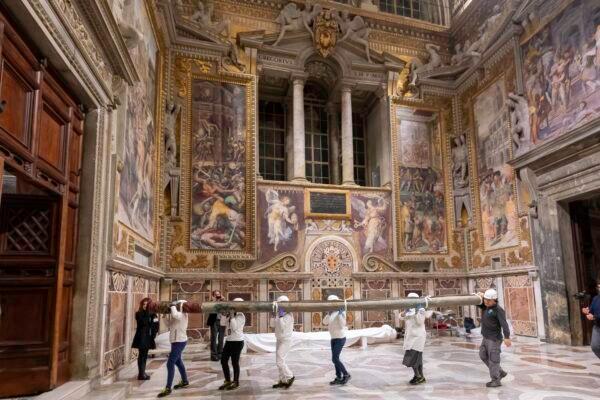In universal judgment, nothing more beautiful has ever been seen in the world. ut fuit universale juditium, sunt res qua non est aliquid in orbe nunc pulchrius
--Paris de Grassis, master of ceremonies for the 16th-century Pope Leo X, wrote in his diary after seeing Raphael’s “Acts of the Apostles” tapestries.
More than 500 years later, all 12 of Raphael’s “Acts of the Apostles” tapestries were recently hung as Pope Leo X had originally intended, on the lower wall of the Sistine Chapel. The last time the complete series of tapestries were hung together in the chapel was in the late 1500s, exhibition and Vatican Museums curator Alessandra Rodolfo told Reuters.
One of Raphael's "Acts of the Apostles" tapestries is taken into the Sistine Chapel where all 12 tapestries were hung together for the first time in 500 years. Governatorato SCV–Direzione dei Musei






